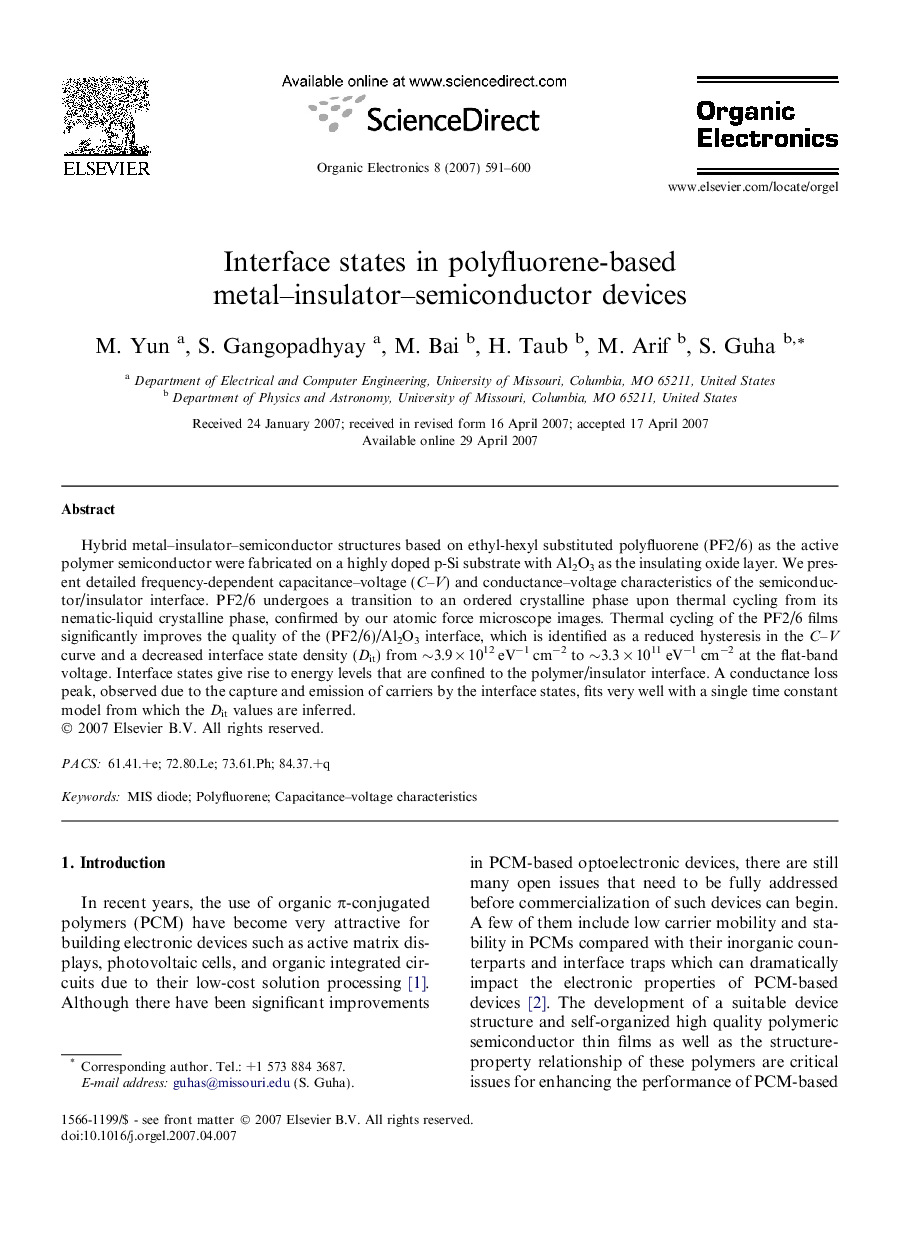| Article ID | Journal | Published Year | Pages | File Type |
|---|---|---|---|---|
| 1268648 | Organic Electronics | 2007 | 10 Pages |
Hybrid metal–insulator–semiconductor structures based on ethyl-hexyl substituted polyfluorene (PF2/6) as the active polymer semiconductor were fabricated on a highly doped p-Si substrate with Al2O3 as the insulating oxide layer. We present detailed frequency-dependent capacitance–voltage (C–V) and conductance–voltage characteristics of the semiconductor/insulator interface. PF2/6 undergoes a transition to an ordered crystalline phase upon thermal cycling from its nematic-liquid crystalline phase, confirmed by our atomic force microscope images. Thermal cycling of the PF2/6 films significantly improves the quality of the (PF2/6)/Al2O3 interface, which is identified as a reduced hysteresis in the C–V curve and a decreased interface state density (Dit) from ∼3.9 × 1012 eV−1 cm−2 to ∼3.3 × 1011 eV−1 cm−2 at the flat-band voltage. Interface states give rise to energy levels that are confined to the polymer/insulator interface. A conductance loss peak, observed due to the capture and emission of carriers by the interface states, fits very well with a single time constant model from which the Dit values are inferred.
